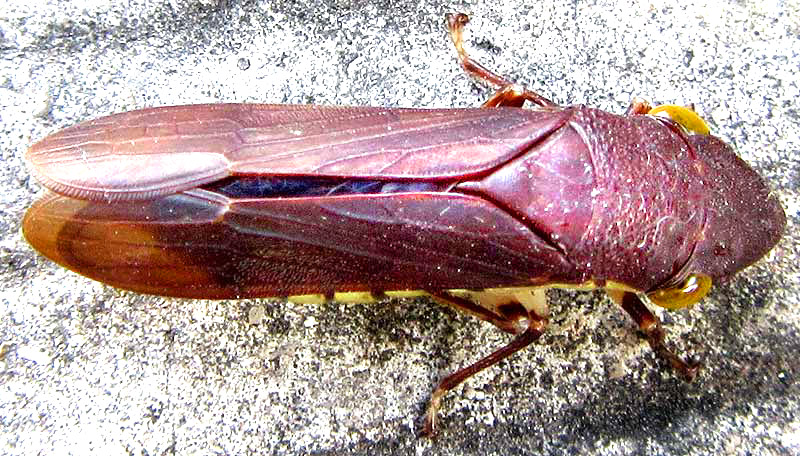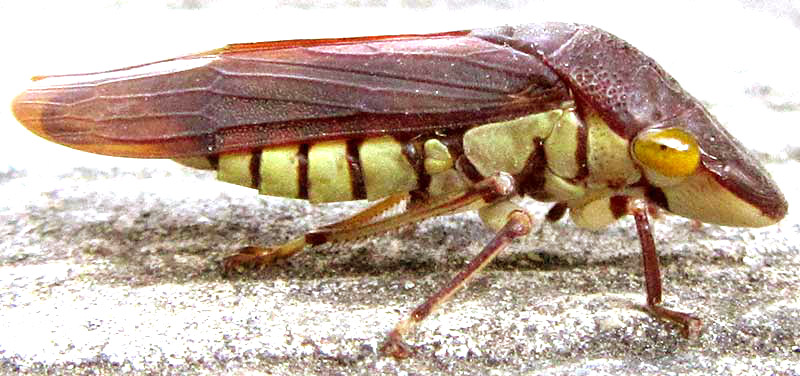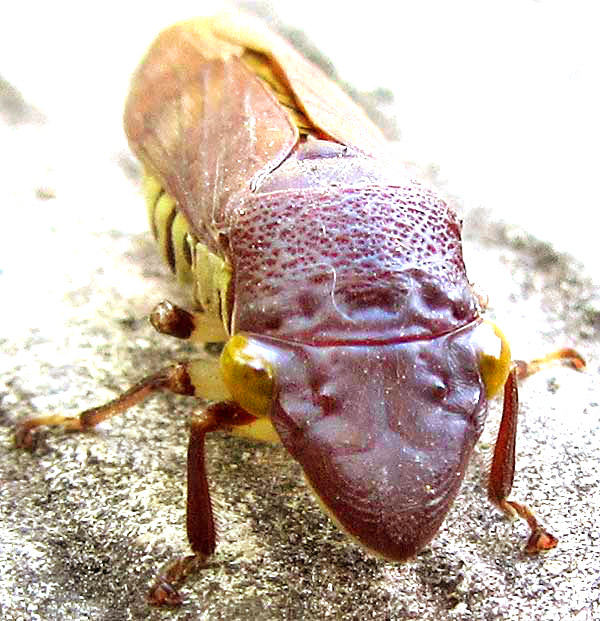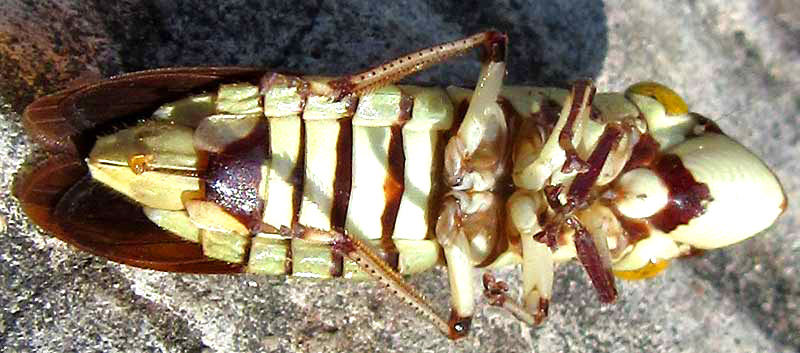Excerpts from Jim Conrad's
Naturalist Newsletter
from the February 21, 2016 Newsletter issued from Hacienda Chichen Resort beside Chichén Itzá Ruins; limestone bedrock; elevation ~39m (~128ft), N20.675°, W88.569°; central Yucatán state, MÉXICO
SHARPSHOOTER LEAFHOPPER
Last December we featured a brilliantly colored Sharpshooter Leafhopper, Erythrogonia laudata, found sucking sap from heliconia plants outside the hut's door, shown at www.backyardnature.net/mexnat/laudata.htm.
This week volunteer insect identifier Bea from Ontario, currently visiting us, found another sharpshooter, also a sap-sucker and shaped like the earlier one, but this was a different species, a dark brown one, shown below on a sidewalk before a hotel near the Hacienda, in one of Bea's photos:

A side view displaying its yellow undersurface with dark bands, and the leafhopper's curious profile, appears below:

Below you can see a head-on shot emphasizing its bulging, yellowish eyes, the short antennae and the broad head giving it the look of something from the Jurassic Period:

After taking the above shots, Bea returned to photographing butterflies but a few minutes later went back to the sharpshooter, who now lay on his back, as shown below:

Was this a natural death or had the hotel fogged the area to keep down mosquitoes?
Whatever the case, Bea identifies this as PSEUDOPHERA CONTRARIA. Despite belonging to a different genus from our previous sharpshooter, it seems to have no other English name than Sharpshooter. Sharpshooters are leafhoppers, members of the order Homoptera and -- as the bulging compound eyes and broad head suggest -- closely related to cicadas. The species is distributed from southern Mexico to Costa Rica.
Very little information is available about Pseudophera contraria, other than its being listed in a couple of studies as being collected in the vicinity of coconut trees, as well as other tree species. That's worth noting because Bea's sharpshooter lay beneath a Royal Palm, and of course Royal Palms and Coconut trees are both members of the Palm Family.
Therefore, maybe we're substantially increasing the amount of information about the species by unequivocally stating here that in February in the Yucatan, Bea found one dying on the pavement near a Royal Palm tree.